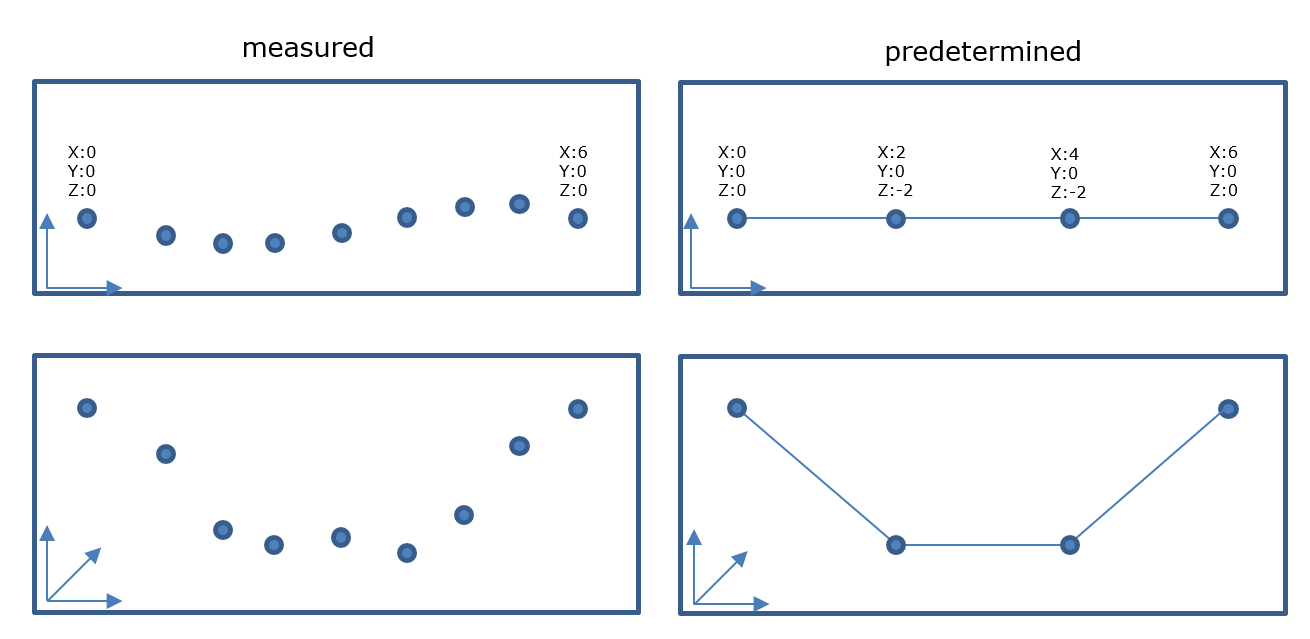Hi,
I have 2 input files:
- measured cross sections (consisting of points with x, y and z coordinates);
- predetermined cross sections (consisting of a couple of measurments, but can also be made into points or lines).
I want to compare the predetermined cs with the measured ones. The predetermined cs must completeley fit within the measured cs. I was thinking of making an area out of both cs, I can then shift the predetermined cs along the line (2D) and determine the best fitting position (starting form 0, then +0.5 m, +1.0 m and so on). However the measured cross sections cannot be made into an area suitable for comparing because the points vary and do not form a straight line (in 2D), the area's won't 'intersect' (see picture below). I was thinking of maybe using a neighborfinder to redirect het points into a straight line. Do you guys think this might work? Or should I go at it another way?
Michael



